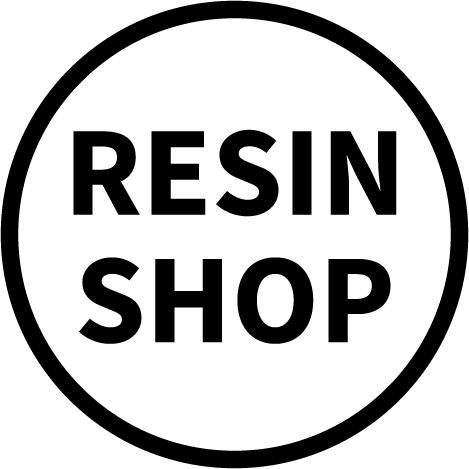Looking for Help?
Find answers to your questions
- Common Difficulties with Epoxy Resin
- Common Mistakes When Using Epoxy Resin
- Getting Started with Epoxy Resin: A Beginner’s Guide
- How to Create a Safe Working Environment for Epoxy Resin
- How to Seal a Surface Before Pouring Epoxy Resin
- Is It Necessary to Seal Before Using Epoxy Resin?
- Surfaces That Require Extra Preparation When Using Epoxy Resin
- Tips For Using Resin Shop Epoxy Resin
- Creative Techniques for Working with Epoxy Resin
- Epoxy Resin Ideas for Children
- How Epoxy Resin Is Used to Restore Old Wooden Furniture
- How to Create 3D Effects with Epoxy Resin
- How to Create a River Table with Epoxy Resin
- How to Create Epoxy Resin Coasters
- How to Create Epoxy Resin Jewellery
- How to Create the River Effect with Epoxy Resin
- How to Use Epoxy on a Concrete Floor
- How to Use Epoxy Resin on a Painting Canvas
- Advantages and Disadvantages of Using Pigments with Epoxy Resin
- Characteristics of Alcohol Ink Pigments with Epoxy Resin
- Characteristics of Pearl Pigments (Mica Pigments) with Epoxy Resin
- Most Common Pigments Used with Epoxy Resin and Their Effects
- Tips for Blending Alcohol Ink and Pearl Pigments with Epoxy Resin
- Tips for Using Alcohol Ink Pigments with Epoxy Resin
- Tips for Using Pearl Pigments (Mica Pigments) with Epoxy Resin
- What Can Cause Epoxy Resin to Crack Once Cured?
- What Causes Epoxy Resin to Have a Milky or Cloudy Appearance?
- Why Dimples and Soft Spots Occur in Epoxy Resin Once Cured
- Why Do Bubbles Appear in Epoxy Resin?
- Why Do Swirls Appear in Epoxy Resin?
- Why Epoxy Resin Doesn’t Fully Cure
- Why Epoxy Resin Isn’t Clear Once Cured
Why Do Bubbles Appear in Epoxy Resin?
Bubbles in epoxy resin can be frustrating and affect the clarity and smoothness of your finished piece. They can appear due to mixing, pouring, ambient conditions, and surface preparation. Below are the most common causes and practical ways to reduce bubbles.
🌀 Mixing Too Vigorously
- Fast or aggressive stirring traps air in the resin.
- Bubbles form and become suspended in the mixture.
- Best practices:
✅ Mix slowly and gently in a circular motion.
✅ Scrape the sides and bottom of the container thoroughly.
✅ Let the mixed resin sit for a few minutes before pouring.
🌊 Pouring Too Quickly or from a Height
- Pouring resin too fast or from too high creates turbulence, trapping air.
- Best practices:
✅ Pour resin slowly and steadily.
✅ Keep the pouring height as low as possible to reduce air intake.
✅ Pour against the side of a container for controlled flow.
🌡️ Ambient Temperature & Humidity
- High temperatures and humidity can accelerate curing, preventing air bubbles from escaping.
- Humidity can also cause moisture contamination, leading to more bubbles.
- Best practices:
✅ Work in a temperature-controlled environment (18–25°C).
✅ Avoid pouring in high humidity conditions.
✅ Warm resin slightly before use (if thick) to improve flow.
💨 Blowing on the Surface Incorrectly
- Exhaling directly onto resin adds moisture, worsening bubbles.
- Best practices:
✅ Use a heat gun, torch, or straw to gently remove bubbles.
✅ Pass heat in quick sweeps—do not overheat, as it can cause rippling.
🪵 Porous or Uneven Surfaces
- Air trapped in porous surfaces like wood or concrete can rise into the resin.
- Best practices:
✅ Apply a thin sealing coat before pouring the main layer.
✅ Sand surfaces smooth and free from dust or contaminants.
🎨 Additives & Pigments
- Some pigments, dyes, or glitters can trap air when mixed improperly.
- Best practices:
✅ Mix thoroughly and slowly before adding to resin.
✅ Avoid foamy or highly aerated pigments.
⚙️ Curing Under Pressure
- Pressure curing (vacuum or pressure chambers) can release dissolved gases, forming bubbles.
- Best practices:
✅ Use only when necessary, following proper chamber settings.
✅ De-gas resin beforehand if using a vacuum system.
📌 Final Thoughts
- Take your time mixing and pouring.
- Work in a controlled environment to avoid temperature and humidity issues.
- Use proper techniques for bubble removal—heat, slow stirring, and sealing surfaces.
- Practice and experiment to refine your process for bubble-free epoxy resin projects.
Updated on 21 Mar 2025
What are your Feelings?
Thanks for your feedback
QUICK LINKS
Contact information
Copyright © 2025 Resin Shop Australia.Powered by Shopify
1 product
was added to your cart
was added to your cart
